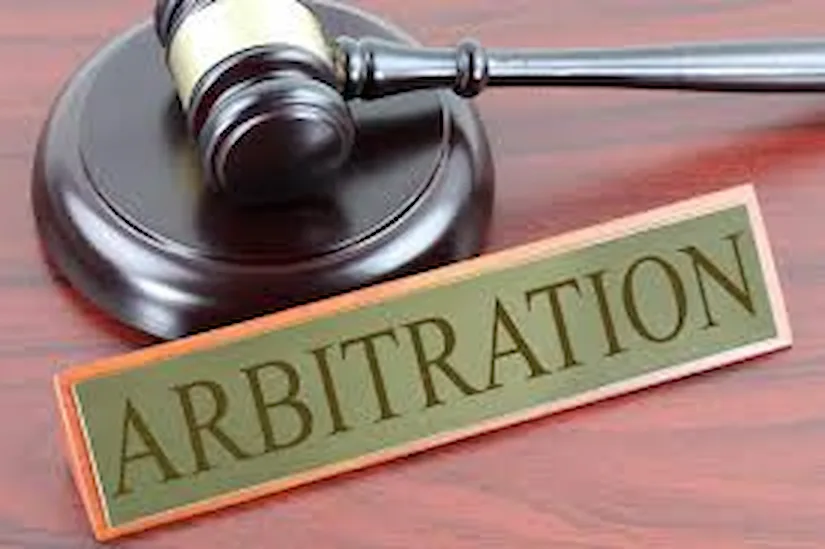1. Introduction
- The Hon’ble Supreme Court recently in, In Re, Interplay Between Arbitration Agreements under the Arbitration and Conciliation Act, 1996 and the Indian Stamp Act 1899, Curative Petition (C) No. 44 of 20323 gave a unanimous verdict holding that an unstamped agreement is inadmissible under the Indian Stamp Act (“the Stamp Act”) but the same cannot be rendered as void ab initio. Thus, arbitration clauses in unstamped or inadequately stamped agreements would be enforceable. This means that the issue of stamping would be dealt with by the Hon’ble Arbitral Tribunal (“Tribunal”) being a curable defect. The said judgment while it lowers the burden on Courts and attempts to follow the mandate of Section 5 of the Arbitration and Conciliation Act, 1996 (“the Act”) envisioning minimum judicial interference, leaves very little room for Courts to intervene in a Section 11 Application hearing.
- With this narrow a compass, the judgment of the Hon’ble Bombay High Court in 22Light through its Sole Proprietor Baljit Harbans Kohli v OESPL Pvt. Ltd., Commercial Arbitration Application No. 215 of 2021 states that one of areas which could be examined by the Hon’ble Court is whether on a prima facie scrutiny, there is even a claim which needs to be arbitrated. The judgment seems to provide for a primary layer of filtration apart from concluding the existence of an arbitration agreement.
2. Facts of the Matter
- The Applicant sought for appointment of an Arbitrator to resolve the disputes between the parties arising out of a Memorandum of Understanding dated 30th March 2021 (“MOU”). The Applicant described the relationship between parties as per the MOU stating that it was engaged by the Respondent to provide financial services. To provide the said services and finances, the Applicant claimed to have prepared a term sheet, which was accepted by the Respondent.
- Based on this term sheet and the MOU, the Applicant had raised two invoices both dated 10th August 2021 which were payable by the Respondent and also made reference to the said invoices in its invocation notice dated 10th August 2021. The Respondent on the other hand contended that the invoices were not payable as the invoices were raised for, (i) preparation of an investment memorandum; and (ii) fee due and payable upon first disbursement. The Respondent stated that neither of these events had occurred and in fact contended that the email communications were patently clear to demonstrate that the Respondent had never accepted the term sheet. Hence, it was the Respondent’s contention that the Section 11 Application seeking appointment of an Arbitrator was not maintainable as there was nothing to arbitrate.
3. Was there an Arbitrable Dispute?
- The Hon’ble Bombay High Court observed that the arbitration was being sought for by the Applicant with reference to only two invoices as shown above. With reference to the invoice which sought for INR 10,00,000/- (Indian Rupees Ten Lakhs only) for preparation of an investment memorandum, it was concluded that no such memorandum had ever been prepared and hence claiming an invoice basis this would be patently incorrect. With reference to the invoice for fee due and payable upon first disbursement, it was noted that the MOU indeed had a clause which stipulates the fees at 2.5% of the amount disbursed but it was concluded that no amount had actually been disbursed to the Respondent. Hence, the specific event which would lead to the said claims had not occurred.
- Hence in view of the facts and circumstances of the case, the Hon’ble Bombay High Court refused to entertain the Application seeking appointment of an Arbitrator and dismissed the said Application. While the position is now well settled that a Court can while adjudicating a Section 11 Application dismiss the same if the claims on a prima facie view appear to be non-arbitrable, there are still a number of Courts who upon mere existence of an arbitration agreement refer the matter to arbitration. Hence, this article further looks at the scope of judicial review while adjudicating non-arbitrable claims.
4. Scope of Judicial Review of Claims
- The scope which can be exercised to look at claims are divided into two halves, i.e., prior to the amendment to the Act in 2015 and post the amendment whereby sub-section 6(A) was added to Section 11 of the Act. Prior to the amendment, the Court held that it could examine the non-arbitrability of a dispute when accord and discharge of a contract is alleged. This was furthered by the judgment of the Hon’ble Supreme Court in New India Assurance Co. Ltd. v Genus Power Infrastructure Ltd., (2015) 2 SCC 424 wherein it was held that allegations of fraud, coercion, undue influence will have to be proved by parties in the first instance before a court of law. These judgments widened the scope of examination by Courts prior to referring the matters for arbitration, if referred at all. To counter the rising burden on the judiciary and to protect the legislative intent behind alternate modes of dispute resolution, the legislature amended the Act in 2015 by inserting sub-section 6(A) where any Court while considering an Application under Section 11 for appointment was to merely confine its examination to the existence of an arbitration agreement.
- The Hon’ble Supreme Court in Duro Felgeura, S.A. v Gangavaram Port Ltd., (2017) 9 SCC 729 followed the principle of confining itself to the examination of an arbitration agreement and further held that Courts are required to do the same, “nothing more, nothing less.” While there were judgments which took a contrary view to the ratio laid down in Duro Felgeura the same were overruled.
- The Hon’ble Supreme Court then examined the rationale of blindly referring any dispute even if non-arbitrable to arbitration in Vidya Drolia & Ors. v Durga Trading Corporation, (2021) 2 SCC 1. The Hon’ble Supreme Court agreed that Courts cannot examine anything beyond existence of an arbitration agreement but differed from the other judgments by holding that when a situation arises where it is manifestly and ex facie certain that the arbitration agreement is non-existent, invalid or the disputes are non-arbitrable, the same could to a certain extent be determined by Courts and judicially examined. The rationale behind this as the Hon’ble Supreme Court elucidated is to “check and protect parties from being forced to arbitrate when the matter is demonstrably “non-arbitrable” and to cut off the deadwood.” Hence, in Vidya Drolia, the Hon’ble Supreme Court concluded that “to prevent wastage of public and private resources, Courts may exercise judicial discretion to conduct an intense yet summary prime facie view while remaining conscious that it is to assist the arbitration procedure and not usurp jurisdiction of the Arbitral Tribunal.”
- Following the rationale laid down in Vidya Drolia, the Hon’ble Supreme Court in a number of judgments dismissed matters sought to be referred to arbitration as being time barred. Finally, adopting the principle laid down in Vidya Drolia, the Hon’ble Supreme Court further analyzed non-arbitrability of claims in NTPC Ltd. v M/s. SPML Infra Ltd., 2023 SCC OnLine SC 389. The Hon’ble Supreme Court there held that “the standard of scrutiny to examine the non-arbitrability of a claim is only prima facie.” It further held that upon prima facie reading of the facts if it emerges that the claim is non-arbitrable, the same must be dismissed as that would prove the lack of bona fides on behalf of the Applicant. The Hon’ble Supreme Court termed such examination as “eye of the needle” holding it to be necessary and compelling.
5. Why is such prima facie examination necessary?
- While the Hon’ble Supreme Court rightfully concluded that such an examination is necessary to separate live claims from the ones which are deadwood or non-arbitrable, many Courts still upon finding existence of an arbitration agreement refer matters to an Arbitrator or Tribunal. Such an exercise without prima facie adjudicating upon the non-arbitrability of claims would lead to two issues; (i) the arbitration may not be fruitful as in the first instance, the claim will be dismissed; and (ii) referring a matter to arbitration when the claims are non-arbitrable would-be time consuming and expensive for parties, which were the very reasons for introducing alternate modes of resolution. Hence, it is pertinent for a court of law to conduct a prime facie examination of the claims sought to be referred to arbitration.
- Further, when one looks at the Act, it is clear that upon appointment of an arbitrator by a court of law, one of the parties under Section 16 of the Act may raise an objection to the jurisdiction of the Arbitral Tribunal to hear the matter basis the non-arbitrability of the dispute. To the said Application, the Arbitral Tribunal shall invite an Affidavit in Reply and if the party who made the Application is declared successful, the Arbitration would have to end. But, in the course of this, much time and money would be wasted by both parties which could have been avoided had the prima facie examination been undertaken by the Courts.
6. Conclusion
- Hence, the judgment of the Hon’ble Bombay High Court in 22Light judgment while rightfully following the rationale laid down in NTPC Ltd. and Vidya Drolia to hold that if on prima facie view it appears that the dispute is non-arbitrable, the said claims must not be referred to arbitration also helps parties from incurring untoward costs and saves them time from being relegated to Arbitration even though the claims may be non-arbitrable.
- Further, this judgment elucidates on how the said objection may be one of the only objections which can now be taken against a Section 11 Application seeking appointment of an arbitrator. Hence, it is the duty of Courts to prime facie consider this issue prior to referring the disputes to Arbitration.
– Nikhilesh Koundinya, Associate, Solomon & Co.
About Solomon & Co.
Solomon & Co. (Advocates & Solicitors) was founded in 1909 and is amongst India’s oldest law-firms. The Firm is a full-service firm that provides legal service to Indian and international companies and high net-worth individuals on all aspects of Indian law.
“Disclaimer”
The information contained in this article is intended solely to provide general guidance on matters of interest for the personal use of the reader, who accepts full responsibility for its use. The application and impact of laws can vary widely based on the specific facts involved. As such, it should not be used as a substitute for consultation with a competent adviser. Before making any decision or taking any action, the reader should always consult a professional adviser relating to the relevant article posting.
Copyright © 2020 Solomon & Co., All rights reserved.





